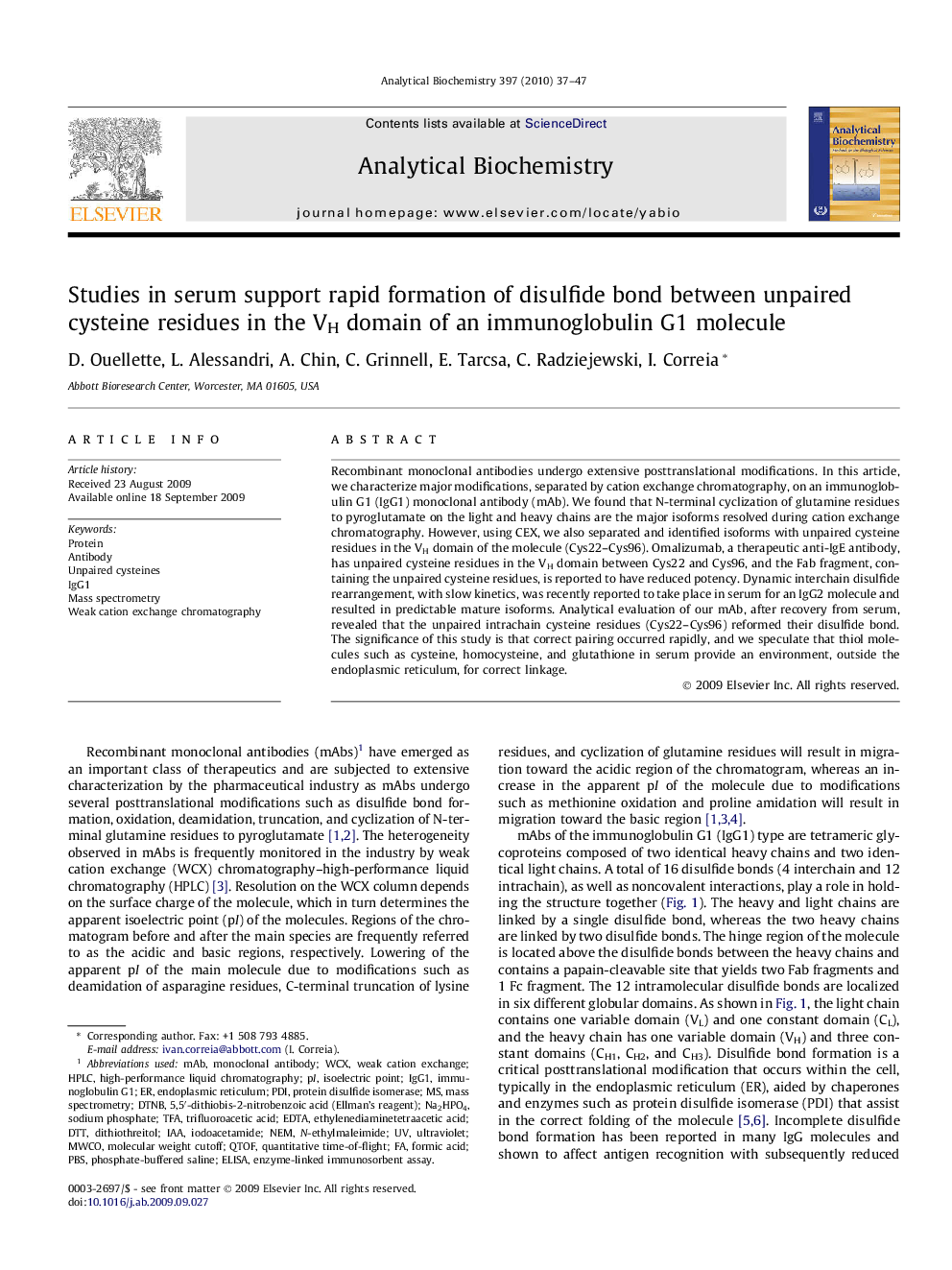| Article ID | Journal | Published Year | Pages | File Type |
|---|---|---|---|---|
| 1173963 | Analytical Biochemistry | 2010 | 11 Pages |
Recombinant monoclonal antibodies undergo extensive posttranslational modifications. In this article, we characterize major modifications, separated by cation exchange chromatography, on an immunoglobulin G1 (IgG1) monoclonal antibody (mAb). We found that N-terminal cyclization of glutamine residues to pyroglutamate on the light and heavy chains are the major isoforms resolved during cation exchange chromatography. However, using CEX, we also separated and identified isoforms with unpaired cysteine residues in the VH domain of the molecule (Cys22–Cys96). Omalizumab, a therapeutic anti-IgE antibody, has unpaired cysteine residues in the VH domain between Cys22 and Cys96, and the Fab fragment, containing the unpaired cysteine residues, is reported to have reduced potency. Dynamic interchain disulfide rearrangement, with slow kinetics, was recently reported to take place in serum for an IgG2 molecule and resulted in predictable mature isoforms. Analytical evaluation of our mAb, after recovery from serum, revealed that the unpaired intrachain cysteine residues (Cys22–Cys96) reformed their disulfide bond. The significance of this study is that correct pairing occurred rapidly, and we speculate that thiol molecules such as cysteine, homocysteine, and glutathione in serum provide an environment, outside the endoplasmic reticulum, for correct linkage.
